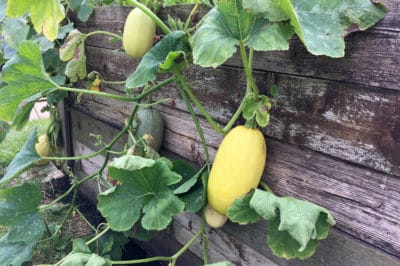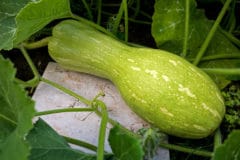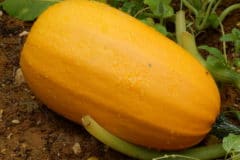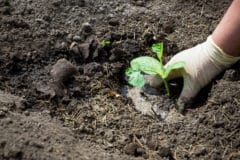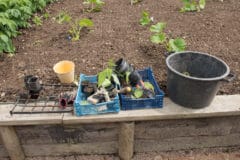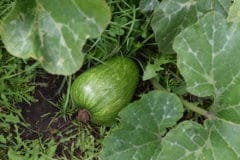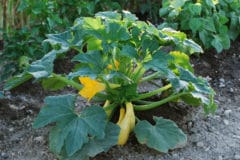Planting Spaghetti Squash Directly Into the Ground
Although it is easy to grow, spaghetti squash is one of the squash types that require a long growing season. Depending on the variety you choose, you need to plan for a minimum of 90 days of growing time, and more likely 100-110 days.
If you live in a region with a relatively long growing season, you can safely plant the seeds outdoors as soon as the soil has reached 60-65°F (16-18°C ). Soil usually reaches the correct temperature for planting around two weeks after the last frost in the spring, or in mid-May or early June.
Starting Spaghetti Squash Indoors
If you have a short growing season, you should plant your seeds indoors about six weeks before the last frost date. Planting indoors allows you additional growing time so you can still have a plentiful spaghetti squash harvest.
To start the seeds inside, follow the steps outlined below:
- Fill plantable peat pots with a suitable organic potting soil.
- Place one seed in each pot and push down to a depth of one inch (2.5 cm).
- Water the pots liberally so the soil is damp but not dripping.
- Place the pots in a sunny location.
The spaghetti squash seeds should germinate within 1-2 weeks. Continue watering them as the soil dries out, then transplant them outdoors when you see two sets of leaves.
Where to Plant Spaghetti Squash
Like other winter squash such as butternut and acorn squash, spaghetti squash thrives in full sun. Although your plants will grow and produce fruits with six hours direct sunlight, they will perform best if they have 8-10 hours of sun.
Spaghetti squash also grows better when you plant the seeds in hills. Mounds of soil allow more heat to reach the plants, and the higher elevation prevents the roots from getting soggy.
Tip: Spaghetti squash is a vining plant, so be sure to provide ample room for your spaghetti squash vines to spread out.
Planting Spaghetti Squash in Containers
If you are concerned about having enough room in your garden (or if you do not have a garden plot), you can also grow spaghetti squash in containers. Instead of planting the seeds in the ground, plant them in a large growing container.
To plant in containers, you need to give them a place for the vines to spread. Installing a trellis is best, but you can improvise by placing the pot next to a chain link fence or any vertical surface the vines can climb.
Tip: You also need to provide support for the spaghetti squash fruits because they are too heavy to hang off the vine. Wooden shelving or something similar will give the fruits a place to rest while they are maturing.
What Spaghetti Squash Needs to Flourish
Regardless of whether you plant your spaghetti squash in the ground or a container, the requirements are the same. You need to plant them in an area that gets a bare minimum of six hours of sunlight each day, although the more sun, the better the plants produce.
Spaghetti squash also requires ample water and regular applications of organic fertilizer. Plan to water the plants every time the soil appears dry, and apply the fertilizer every three weeks as directed on the package.
Harvesting and Storing Spaghetti Squash
Once your spaghetti squash is mature, you can harvest the fruits and either eat them immediately or prepare them for storage. You can refrigerate the squash for approximately a week, or you can store them in a cool, dark area for up to two months.
Regardless of whether you eat them straight from the field or after they have been stored, spaghetti squash can add variety and nutrition to many of your favorite dishes.
